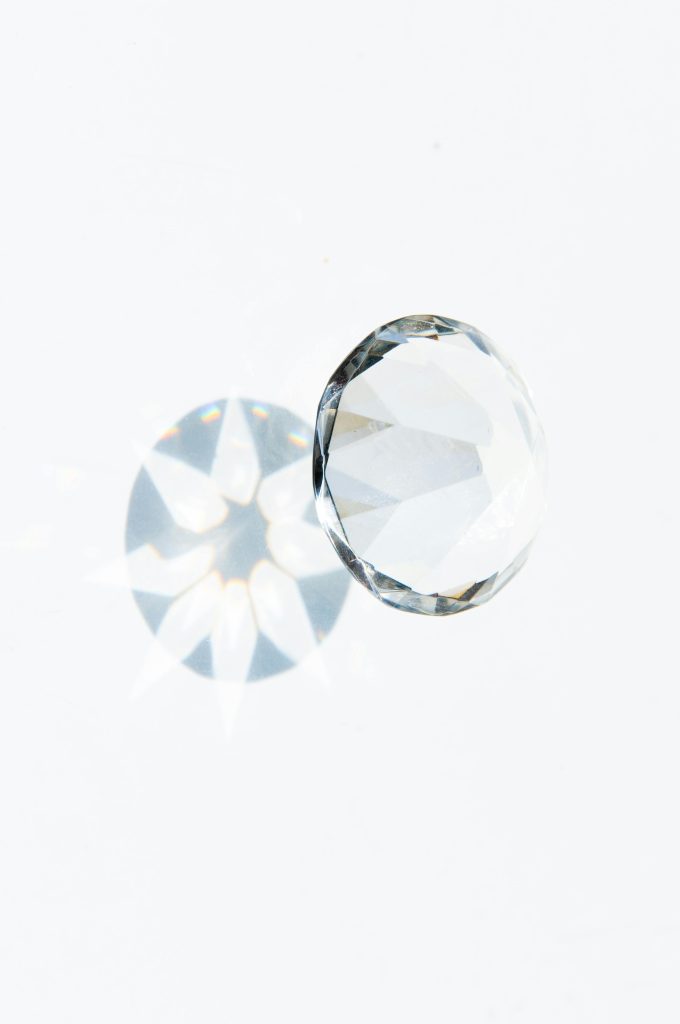Before placing your first bid on a diamond at auction, it is vital to thoroughly understand how the auction process works. Public auctions, whether live or online, are governed by unique rules, and knowing these can make a substantial difference in your buying experience. Auction houses typically offer preview days, where buyers can inspect the diamonds and other lots on display. These previews may also come with expert guidance and catalog listings that detail the diamond’s specifications, including cut, carat, color, clarity, provenance, and estimated value. Importantly, these estimates are not appraisals; they serve as a pricing guide and are often set conservatively to encourage bidding. Additionally, different auction houses may use varying terminologies and abbreviations, so familiarizing yourself with their glossary beforehand is essential. Live auctions may move quickly, and online platforms often allow for absentee or proxy bidding, which can affect your strategy. Understanding buyer’s premiums, payment deadlines, return policies (usually none), and shipping options beforehand is not just helpful—it’s critical.

Do Your Homework: Research is Non-Negotiable
The most successful diamond buyers at auction are often those who do the most research. This means not only understanding the diamond’s 4Cs—cut, color, clarity, and carat weight—but also being familiar with current market prices and trends. For instance, while diamonds with D color and flawless clarity command top dollar, they may not always offer the best value for budget-conscious buyers. Auction diamonds can vary widely in quality and condition, and some may be estate or antique pieces, which require even closer scrutiny. Investigate the auction house’s reputation and whether it specializes in fine jewelry, estate sales, or general antiques. Verify if the diamond has a certificate from a reputable gemological lab such as GIA (Gemological Institute of America) or AGS (American Gem Society). If it lacks certification, factor the cost and risk of post-purchase grading into your decision. Utilize resources such as Rapaport Diamond Reports, online auction archives, or retail diamond price calculators to compare prices. The more informed you are, the more confidently you can identify true value—and avoid overpaying or getting caught in a bidding war.
Inspect the Diamond Thoroughly: Clarity on Clarity (and More)
Never assume a diamond is flawless or well-cut simply because it appears sparkly under display lights. Auction houses often present items in highly flattering lighting conditions that can conceal flaws and enhance brilliance. Attending a pre-auction viewing or requesting high-resolution images and video (if participating online) is essential. Pay attention to the clarity of the stone under magnification—look for inclusions, chips, or cloudiness that could affect both value and structural integrity. Examine the cut proportions: a poor cut can drastically diminish a diamond’s sparkle, regardless of its carat or clarity. Be cautious of diamonds with overly thin girdles, deep pavilions, or large culets, as these may indicate durability concerns or diminished light performance. Also, investigate whether the stone has undergone any treatments, such as fracture filling or laser drilling, which can affect resale value and should always be disclosed. Be skeptical of vague or incomplete descriptions, and never hesitate to ask for additional documentation or clarification from the auctioneer. If possible, consult a trusted gemologist for an independent opinion before the bidding begins.
Set a Strict Budget: Bid with Discipline
One of the classic pitfalls of diamond auctions is getting caught up in the excitement and exceeding your financial limits. This is especially common in competitive or fast-paced bidding environments, where buyers act on emotion rather than logic. To prevent this, establish a firm maximum budget before the auction begins and commit to it without exception. Include in your budget the buyer’s premium (typically 10%–25% of the final bid), taxes, shipping fees, and potential insurance or certification costs. Consider the total cost of ownership rather than just the hammer price. It is also wise to set a secondary “walk-away” price, slightly below your maximum, to avoid pushing your limit impulsively. Seasoned buyers often use this method to maintain financial discipline and avoid regrets. Use bidder paddles, apps, or online dashboards carefully—never click or raise unless you are absolutely sure. If you are new to auctions, consider watching a few in advance to understand the pacing and psychological dynamics at play. This preparation will equip you to stay composed and focused when your diamond lot comes up.
Don’t Rely Solely on Auction House Descriptions
While auction house catalogs are a valuable resource, they should not be considered definitive sources of truth. Descriptions are typically written in broad, sometimes promotional language designed to generate interest and encourage higher bidding. You may see phrases like “important diamond,” “signed piece,” or “magnificent clarity” without detailed explanation or third-party verification. Even when lab certificates are referenced, the catalog may omit key technical specifications or disclaimers. For this reason, always consult the full lab report if available, and cross-reference it with the diamond’s physical characteristics as observed in person or via trusted images. Keep in mind that auction houses often use in-house gemologists who may apply standards that differ from independent labs like GIA. Additionally, auction items are usually sold “as is,” meaning you cannot return the item if it turns out to be misrepresented or if you simply change your mind. Buyers must bear the responsibility of due diligence and cannot rely on catalog language alone. Double-check carat weights, condition notes, measurements, and setting quality. When in doubt, always request clarification from the auction house.

Consider the Provenance and History of the Diamond
One of the unique aspects of buying diamonds at auction is the opportunity to acquire pieces with notable provenance or historical significance. A diamond once owned by royalty, a celebrity, or sourced from a famous collection can add intangible value and potentially increase in worth over time. Provenance can affect price dramatically—diamonds linked to high-profile estates or iconic designers like Cartier, Van Cleef & Arpels, or Harry Winston are often more desirable and collectable. However, it’s crucial to verify any claims made about the diamond’s history. Look for documentation such as original receipts, certification papers, or detailed provenance reports included in the auction lot description. Beware of vague or unsubstantiated language like “believed to have been owned by…” unless credible evidence is provided. If you are interested in buying as an investment, diamonds with well-documented histories can appreciate significantly, but this should not replace traditional value metrics such as clarity, cut, and carat. Provenance adds depth to a diamond’s story, but its financial impact should always be evaluated alongside physical quality and market demand.
Use Bidding Strategies: Timing and Psychology Matter
Successful bidding at auctions isn’t just about having the highest number—it’s about understanding auction psychology and using strategic timing. Experienced buyers often wait until the final moments to place a bid, a technique known as “sniping” in online auctions, which can prevent a prolonged bidding war. Others may enter early to intimidate competitors or to set a tone of assertiveness. Observing bidding patterns during earlier lots can also provide insight into your competition’s aggressiveness or budget limits. In live auctions, body language, facial expressions, and vocal tone can influence outcomes; seasoned auctioneers are adept at reading the room and encouraging incremental bids. In online formats, use features such as auto-bidding cautiously—it’s convenient but may also cause you to exceed your planned budget without the emotional cue to stop. Another effective tactic is to place unconventional bid increments. Instead of raising by standard amounts (e.g., $500 or $1,000), try slightly irregular numbers to disrupt competitors’ rhythms. Whatever your strategy, remain flexible but grounded, always referring back to your maximum limit and predetermined walk-away point.
Don’t Overlook Associated Costs and Logistics
A common oversight among first-time auction buyers is underestimating the additional costs and logistical complexities that come after winning a bid. Beyond the hammer price, most auction houses charge a buyer’s premium—a percentage of the final price, which can be as high as 25%—and local or international taxes. If you’re importing a diamond from an overseas auction, factor in duties, shipping fees, and insurance. Shipping fine jewelry requires secure, often expedited, methods with specialized couriers, and some auction houses only ship to select regions. In some cases, you’ll need to arrange for third-party transport. Time constraints are another issue: most auction houses require full payment within a few business days and may impose penalties for delays. If you plan to reset the stone or have it recut, include consultation and labor costs in your budget as well. These post-sale logistics can be time-consuming and expensive if not accounted for in advance. Always ask for a detailed invoice and confirm the auction house’s handling, shipping, and return policies before finalizing your bid.
Consult Experts and Build Relationships with Auction Houses
Buying diamonds at auction doesn’t have to be a solo endeavor. In fact, consulting with independent gemologists, appraisers, and even experienced collectors can give you a critical advantage. A professional evaluation—either of the diamond’s report or an in-person examination—can provide a more neutral perspective than the auction house’s in-house team. You may also want to build relationships with the auction house specialists themselves. They can offer valuable insights into upcoming lots, potential sleepers (undervalued items), or hidden gems in large multi-item sales. Reputable houses like Sotheby’s, Christie’s, Bonhams, and Phillips often have jewelry departments with accessible staff who are open to inquiries. Consistent communication can give you early access to catalogs, invitation-only previews, or expert opinions that are not publicly available. For regular buyers, being recognized by staff can occasionally lead to waived fees or flexibility in terms. Whether you’re looking for a one-time acquisition or beginning a collection, surrounding yourself with knowledgeable allies will significantly increase your odds of a successful and satisfying purchase.
Final Thoughts: Be Patient and Think Long-Term
Buying diamonds at auction is not a guaranteed way to get a bargain, but it can be a rewarding and exciting way to find unique, high-quality pieces—if approached thoughtfully. The most successful buyers understand that patience and preparation are key. Don’t feel pressured to bid on a particular lot just because you’ve invested time in research or feel emotionally attached to the stone. If the bidding exceeds your set limits or if doubts arise during your evaluation, it’s perfectly okay to walk away. Diamonds are a long-term investment, both emotionally and financially. There will always be other auctions, and better opportunities may come along. Rather than rushing into a purchase, focus on building a strong knowledge base, refining your strategy, and learning from each experience. With each auction you participate in, your confidence and intuition will improve, eventually guiding you to the right diamond at the right price.